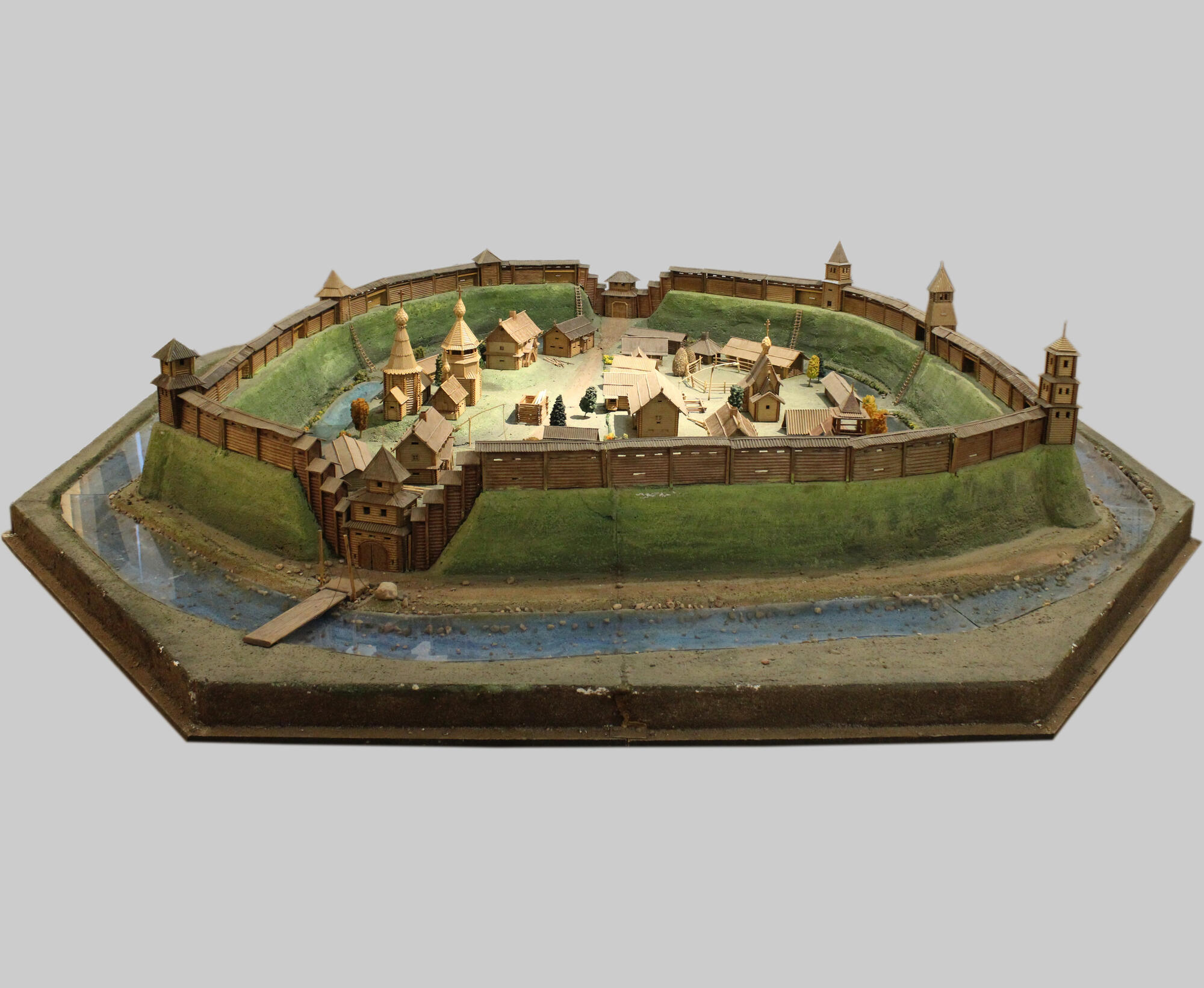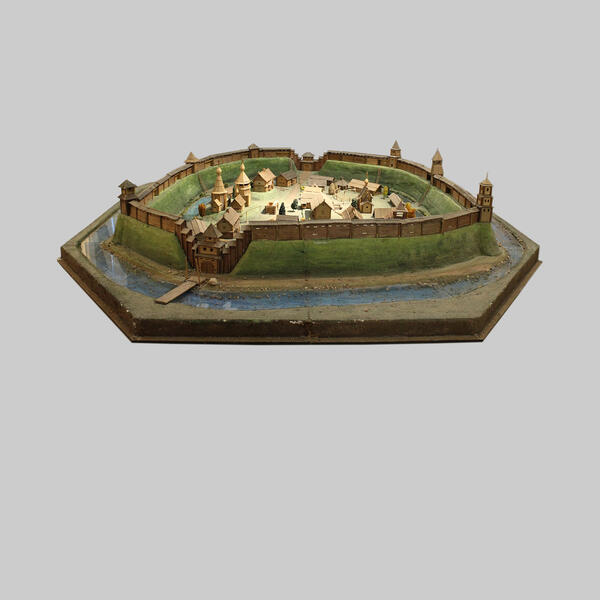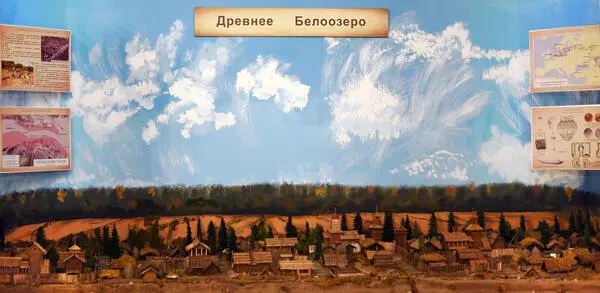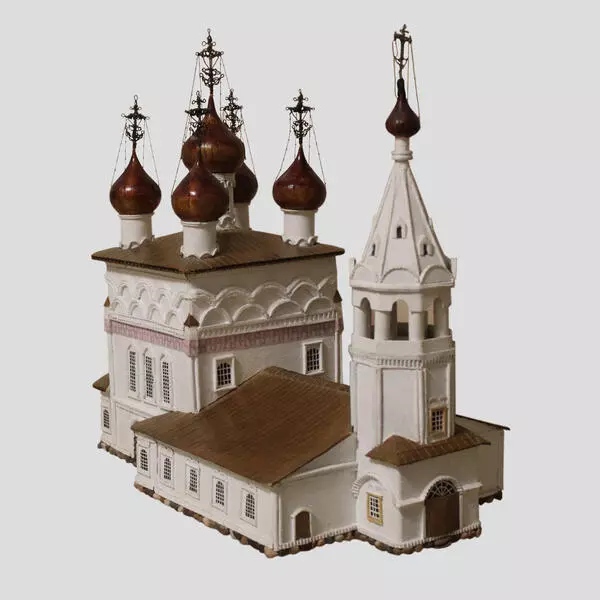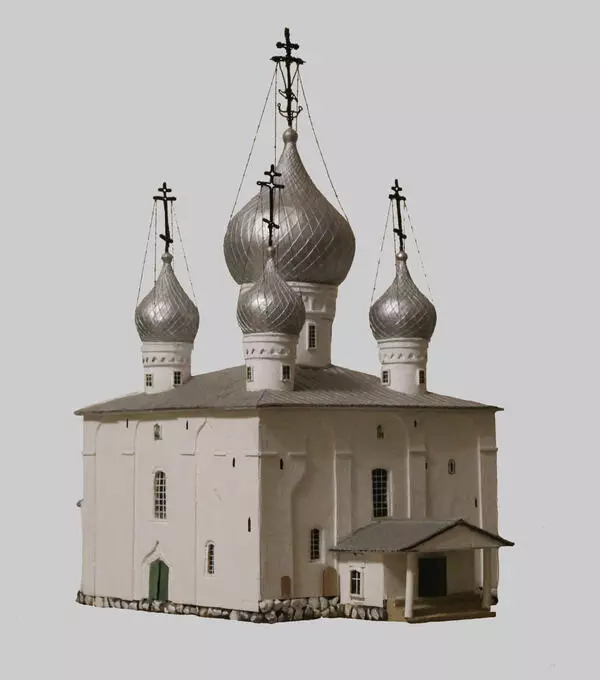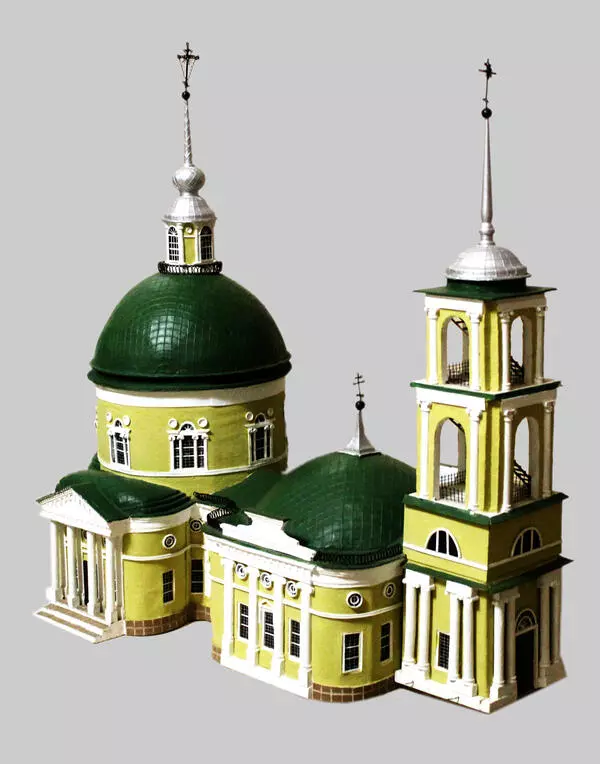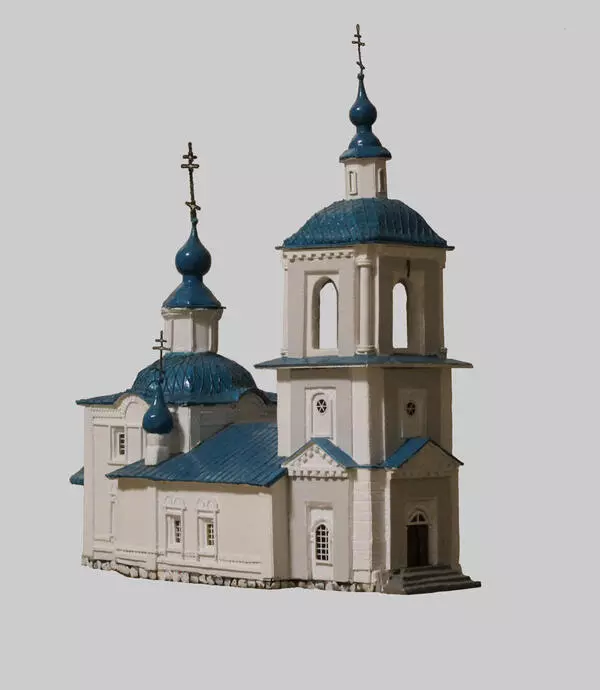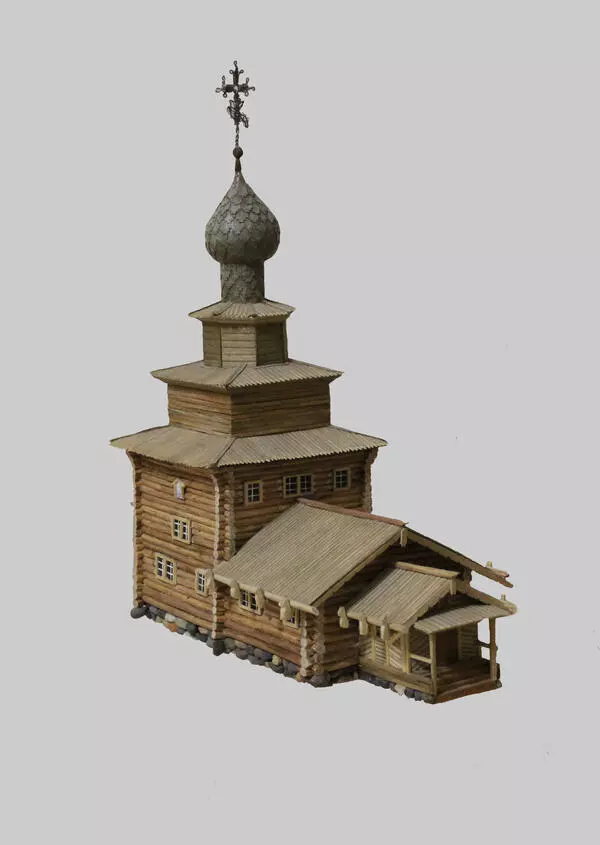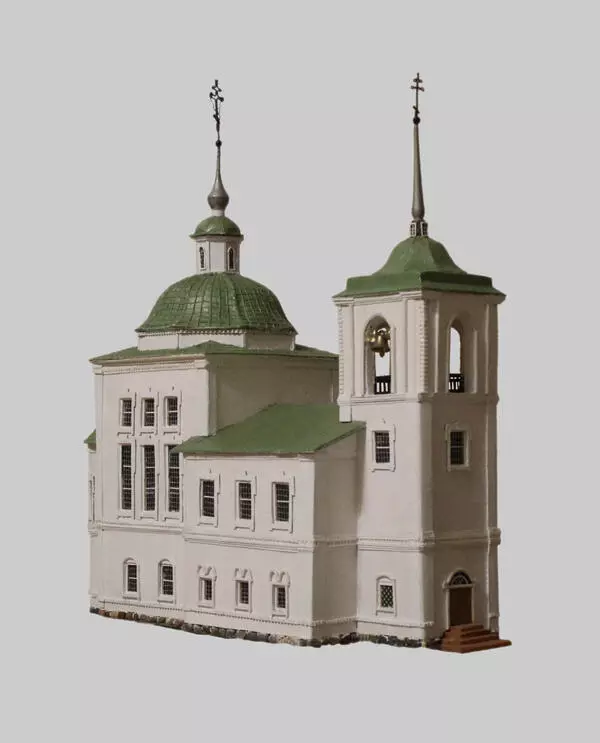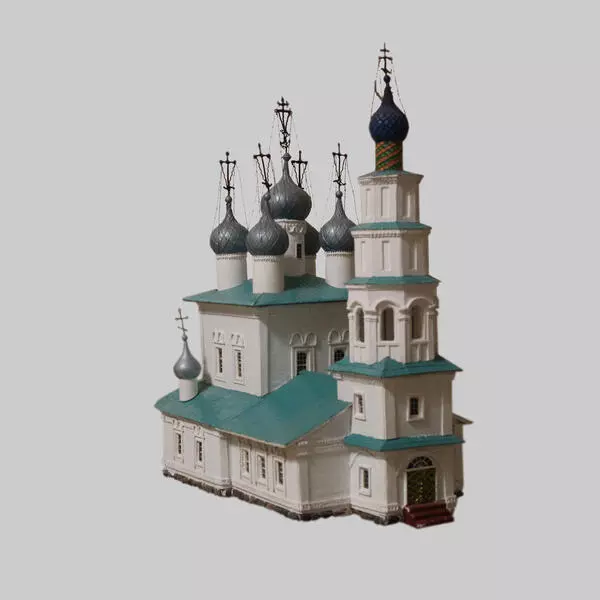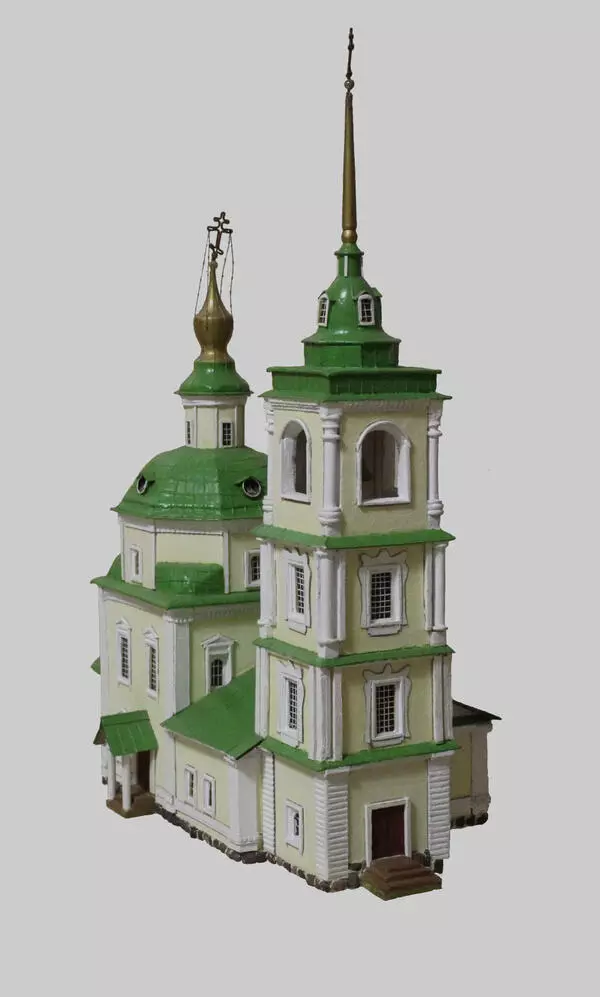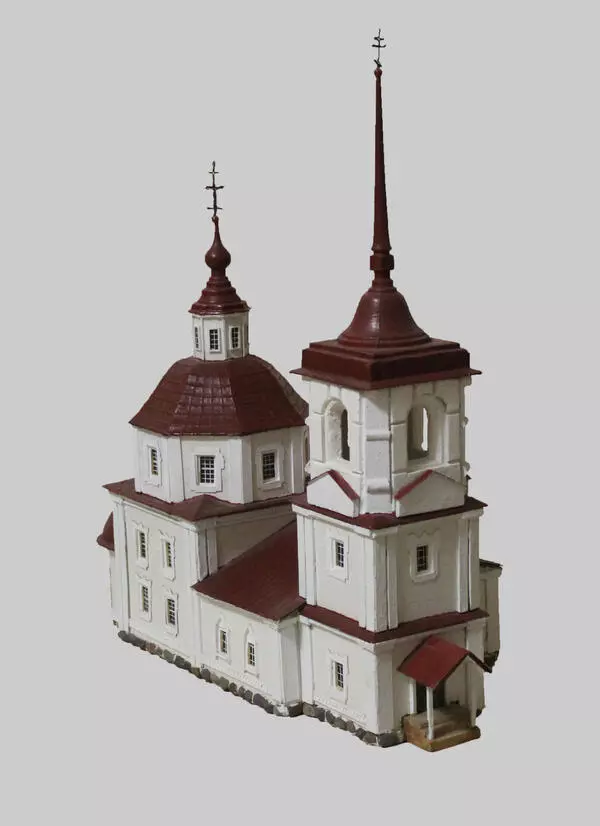The first fortress in the city of Belo-ozero appeared immediately after the transfer of the city to the present location - in the second half of the 14th century. It is not known what the fortress looked like, as it was completely dismantled during the construction of a new fortress in the 1480s. The layout of the new fortress is presented in the exhibition of the Belozersk Regional Museum of Local History.
The Belozersky Kremlin is one of the best preserved monuments of its kind in the North of Russia. The earthworks were built on a strong ancient ridge of glacier deposits. During the five centuries of its existence, the earthworks have significantly sunken. According to 17th-century cadasters, the height of the earthworks was about 17 meters, currently it is 9-9.5 meters. But there are no gaps in the earthworks, the sites where the towers used to be are easily detectable. The reason for this is the wooden structures, ‘lumber cages’, burried inside the earthworks, which prevent the embankment from spreading. Because of this the ancient documents call the earthworks ‘lumber bank’.
Two-storey wooden walls with two gate towers and six windowless towers were built on top of the earthworks. A moat filled with water surrounded them on all sides. The names of the towers are: Bogoslovskaya, Spasskaya, Ilyinskaya Tower, Ilyinskaya Vorotnaya, Lugovaya, Pokrovskaya, Petrovskaya.
The fortress was the administrative center of the city. All government services were found here: the courts of the voivode and the deak, the discharge, customs, local government, as well as the Tsar’s granaries for storing powder treasury, fare and bread reserves, the poorhouse, prison “for thievery and robbery”, deacon’s court.
At the beginning of the 17th century, the fortress contained about 230 domestic buildings and of the tradespeople, about 70 shops and 20 granaries belonging to the tradespeople. After the Time of Trouble when the city was attacked and ravaged by a bandit detachment of Polish-Lithuanian invaders, the main cathedral temples of the city were moved to the fortress.
By the second half of the 17th century, mainly administrative institutions and the clergy remained inside the fortress. During the attack of the invaders on the city the fortress walls survived. They were dismantled in 1758 under Empress Elizabeth Petrovna. Inside the earthworks there is a system of artificial water bodies, they are called ‘kazenki’, probably because they were built at the expense of the state treasury. In the old days, the ponds were populated by crucian carps. Drinking water was taken from wells.
The Belozersky Kremlin is one of the best preserved monuments of its kind in the North of Russia. The earthworks were built on a strong ancient ridge of glacier deposits. During the five centuries of its existence, the earthworks have significantly sunken. According to 17th-century cadasters, the height of the earthworks was about 17 meters, currently it is 9-9.5 meters. But there are no gaps in the earthworks, the sites where the towers used to be are easily detectable. The reason for this is the wooden structures, ‘lumber cages’, burried inside the earthworks, which prevent the embankment from spreading. Because of this the ancient documents call the earthworks ‘lumber bank’.
Two-storey wooden walls with two gate towers and six windowless towers were built on top of the earthworks. A moat filled with water surrounded them on all sides. The names of the towers are: Bogoslovskaya, Spasskaya, Ilyinskaya Tower, Ilyinskaya Vorotnaya, Lugovaya, Pokrovskaya, Petrovskaya.
The fortress was the administrative center of the city. All government services were found here: the courts of the voivode and the deak, the discharge, customs, local government, as well as the Tsar’s granaries for storing powder treasury, fare and bread reserves, the poorhouse, prison “for thievery and robbery”, deacon’s court.
At the beginning of the 17th century, the fortress contained about 230 domestic buildings and of the tradespeople, about 70 shops and 20 granaries belonging to the tradespeople. After the Time of Trouble when the city was attacked and ravaged by a bandit detachment of Polish-Lithuanian invaders, the main cathedral temples of the city were moved to the fortress.
By the second half of the 17th century, mainly administrative institutions and the clergy remained inside the fortress. During the attack of the invaders on the city the fortress walls survived. They were dismantled in 1758 under Empress Elizabeth Petrovna. Inside the earthworks there is a system of artificial water bodies, they are called ‘kazenki’, probably because they were built at the expense of the state treasury. In the old days, the ponds were populated by crucian carps. Drinking water was taken from wells.
